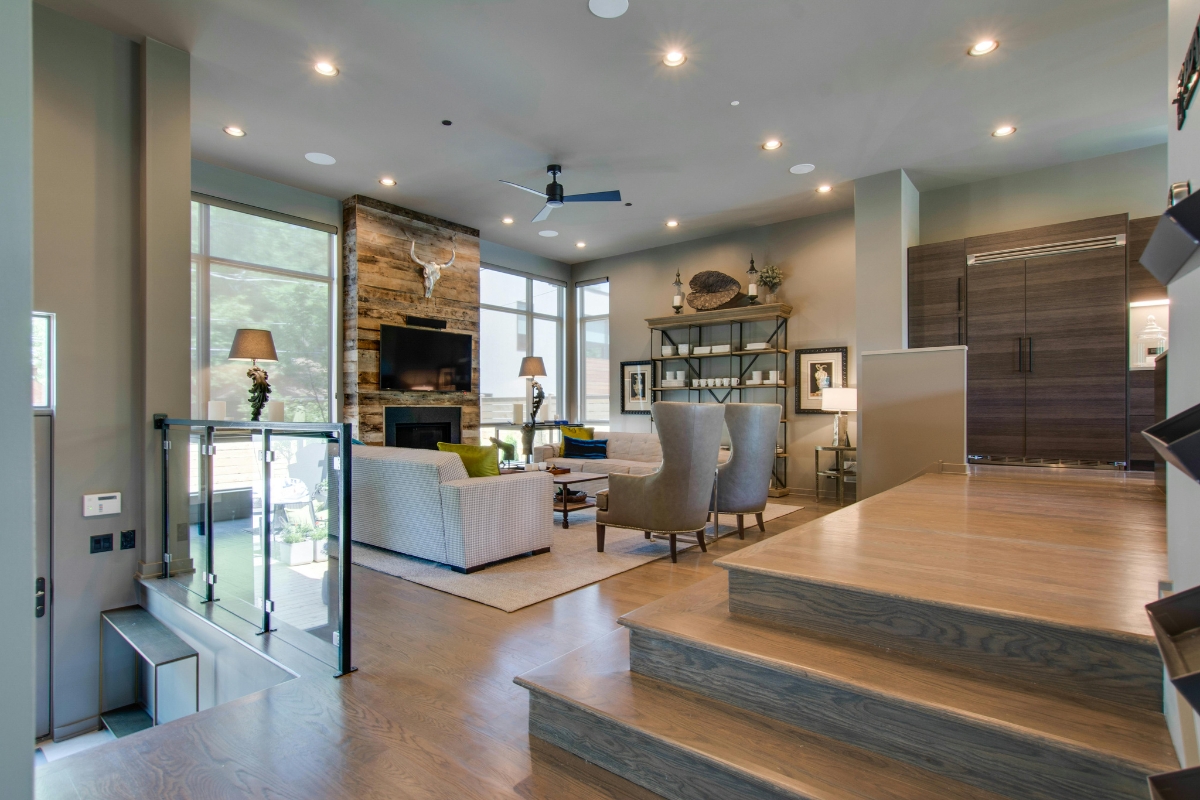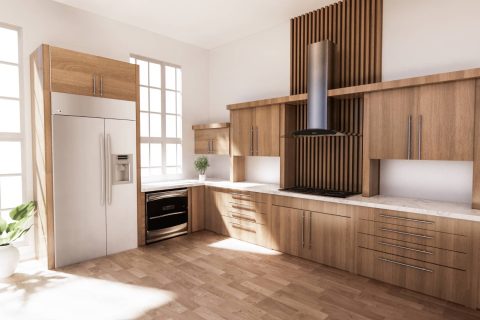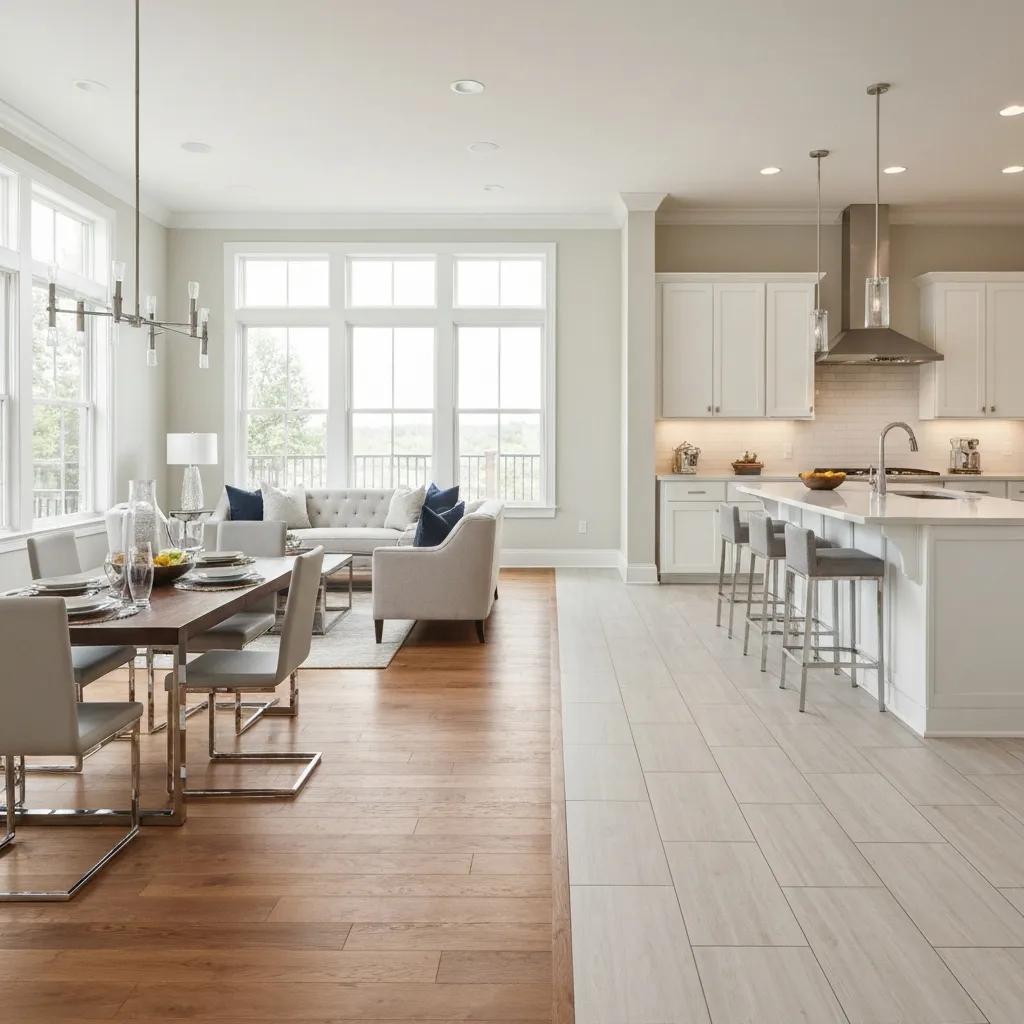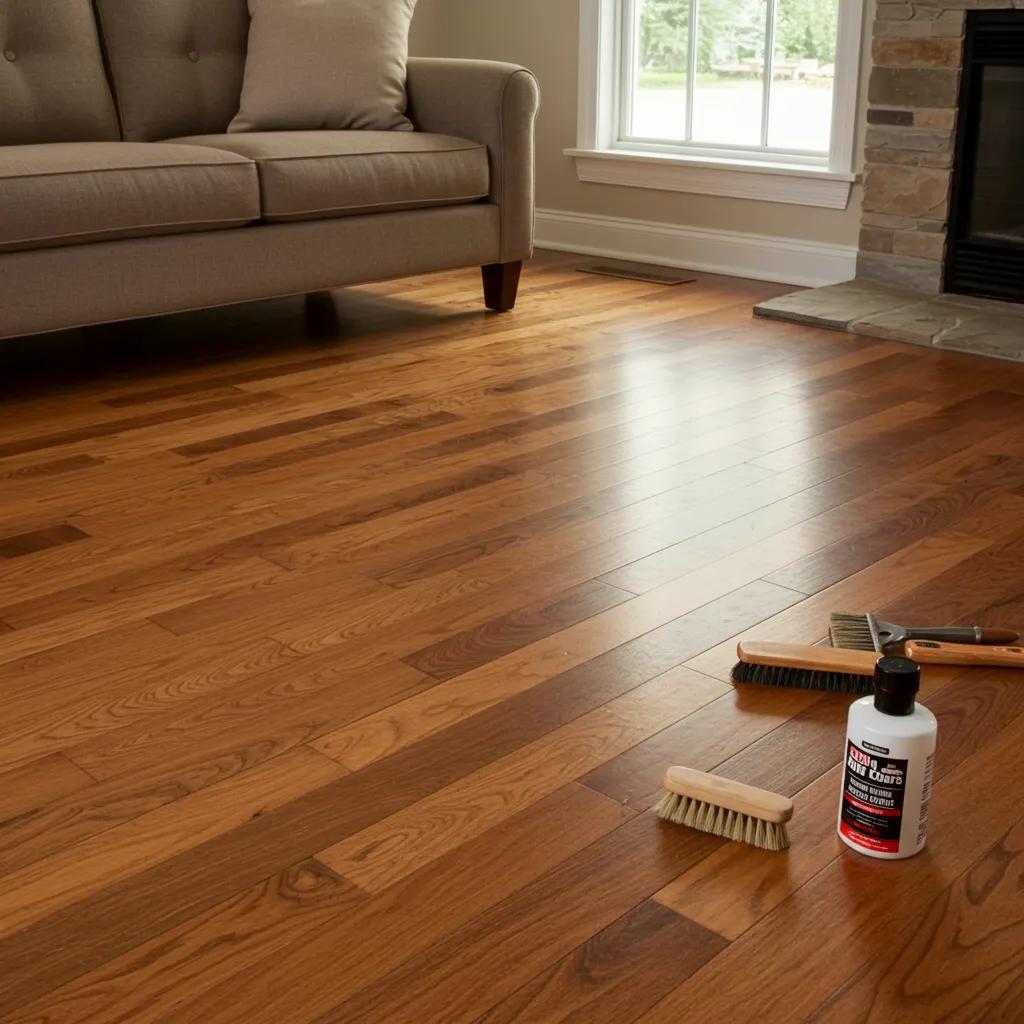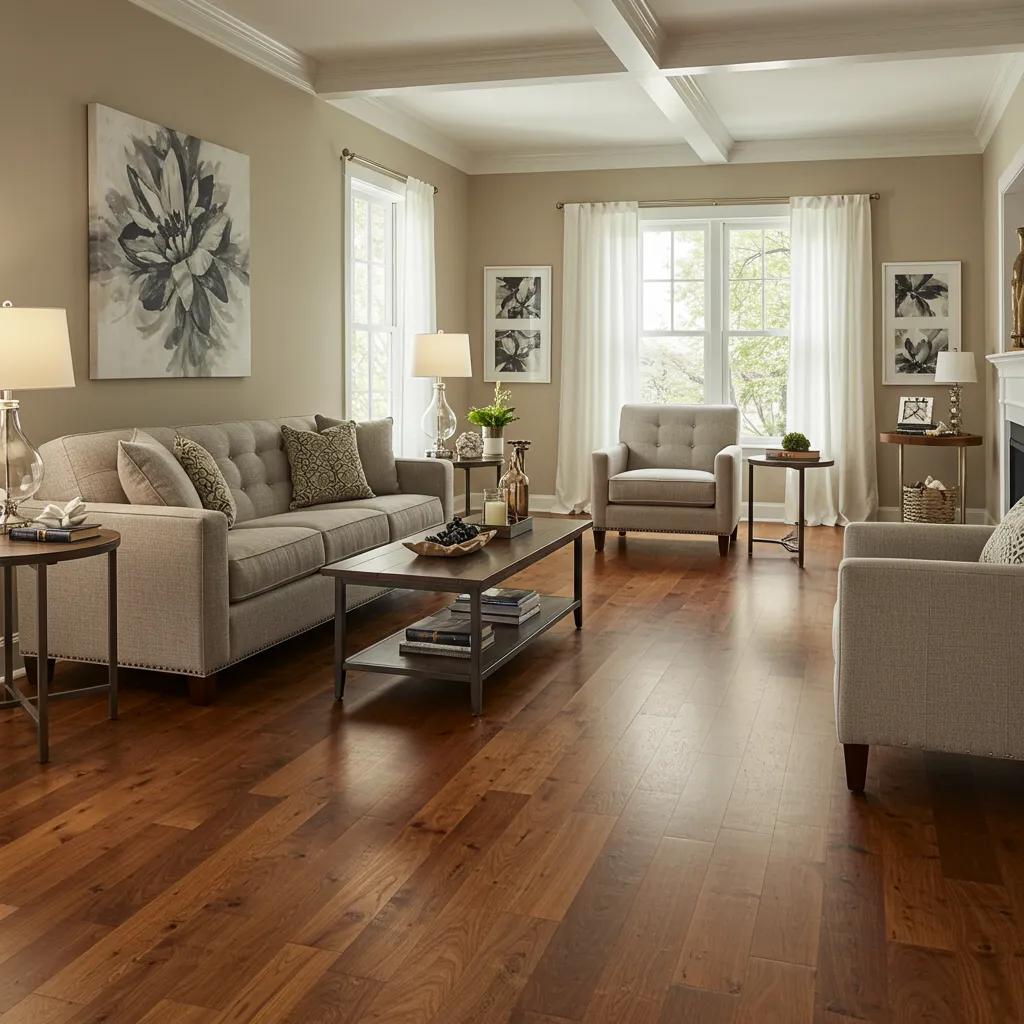In busy Chamblee households, flooring takes a daily beating—whether it’s from kids running through the halls, pets chasing toys, or guests gathering for weekend get-togethers. Choosing the right flooring for high-traffic areas is crucial not only for durability but also for maintaining your home’s style and comfort. The best flooring options combine resilience with easy maintenance and timeless appeal, ensuring your surfaces can stand up to wear without constant upkeep. In this guide, we’ll explore top choices for high-traffic areas, helping you make informed decisions that blend function with aesthetic in your Chamblee home.
Tough Yet Stylish: Best Flooring Options That Handle Heavy Foot Traffic
What Are the Top Flooring Choices for High-Traffic Areas in Chamblee Homes?
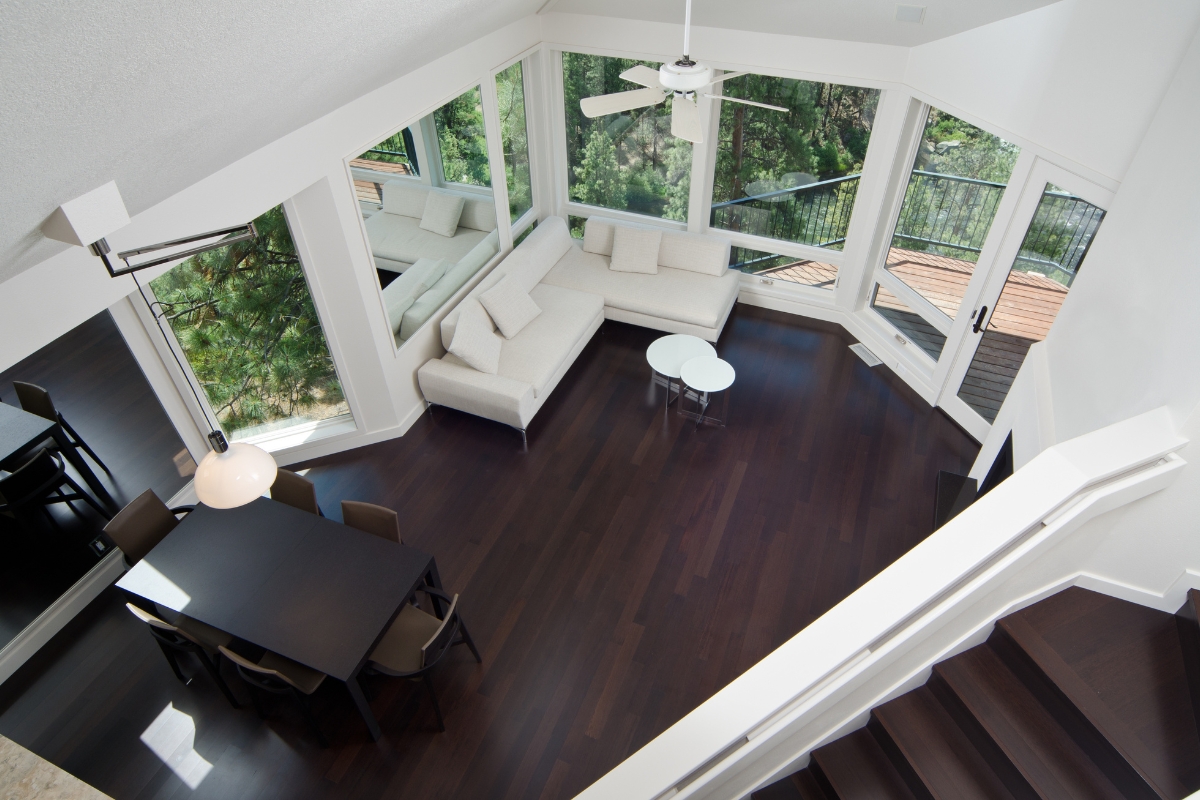
Homes in Chamblee see their fair share of foot traffic, especially in busy spaces like kitchens, hallways, and living areas. Choosing the right flooring in these zones isn’t just about appearance. It’s about selecting materials that can stand up to daily wear, resist damage from spills or scuffs, and remain easy to clean. Fortunately, several flooring options strike a good balance between durability and design without requiring excessive upkeep.
Luxury vinyl plank, or LVP, has become a go-to choice for many homeowners, especially in high-traffic households. Its layered construction gives it strength, while its top wear layer resists scratches from pets, shoes, and furniture movement. LVP also handles moisture well, which makes it a smart pick for kitchens, bathrooms, or even basements. Newer versions often come with textures and patterns that mimic wood or stone, so it’s possible to get the look you want without sacrificing practicality.
Engineered hardwood is another option for those who want the warm appearance of wood with better resistance to humidity and temperature changes. While traditional hardwood can warp or swell in changing conditions, engineered versions are built with a stable core that makes them more adaptable. They’re a good fit for living rooms and dining areas where style matters but where some durability is still needed. Regular sweeping and occasional refinishing can keep them looking clean and polished over time.
Tile, including both porcelain and ceramic, is a solid option for entryways, bathrooms, and kitchens. These materials are dense, stain-resistant, and unlikely to chip or crack with regular use. They also offer flexibility in terms of design, from classic stone looks to bold patterns. One of the main advantages of tile is its ability to stand up to both heavy foot traffic and moisture, making it particularly useful in homes where wet shoes or muddy paws are a daily concern. Just make sure grout lines are sealed properly to prevent staining or moisture buildup over time.
Waterproof flooring products are also worth considering in areas where spills are likely. These include certain types of vinyl, laminate, and hybrid flooring that come with watertight cores or sealed edges. While they’re not entirely impervious to damage, they offer an extra layer of protection against everyday accidents like knocked-over drinks or tracked-in rainwater. They’re especially useful in homes with kids or pets, where quick cleanup and peace of mind are priorities.
When choosing flooring for high-traffic spaces, consider not only the surface durability but also how it performs over time. Look at how the material handles moisture, whether it hides dirt and scuffs, and how much routine maintenance it will need. The right floor should blend into your home’s design while quietly doing the heavy lifting every day.
Why Is Luxury Vinyl Plank (LVP) Flooring a Leading Choice for High-Traffic Areas?
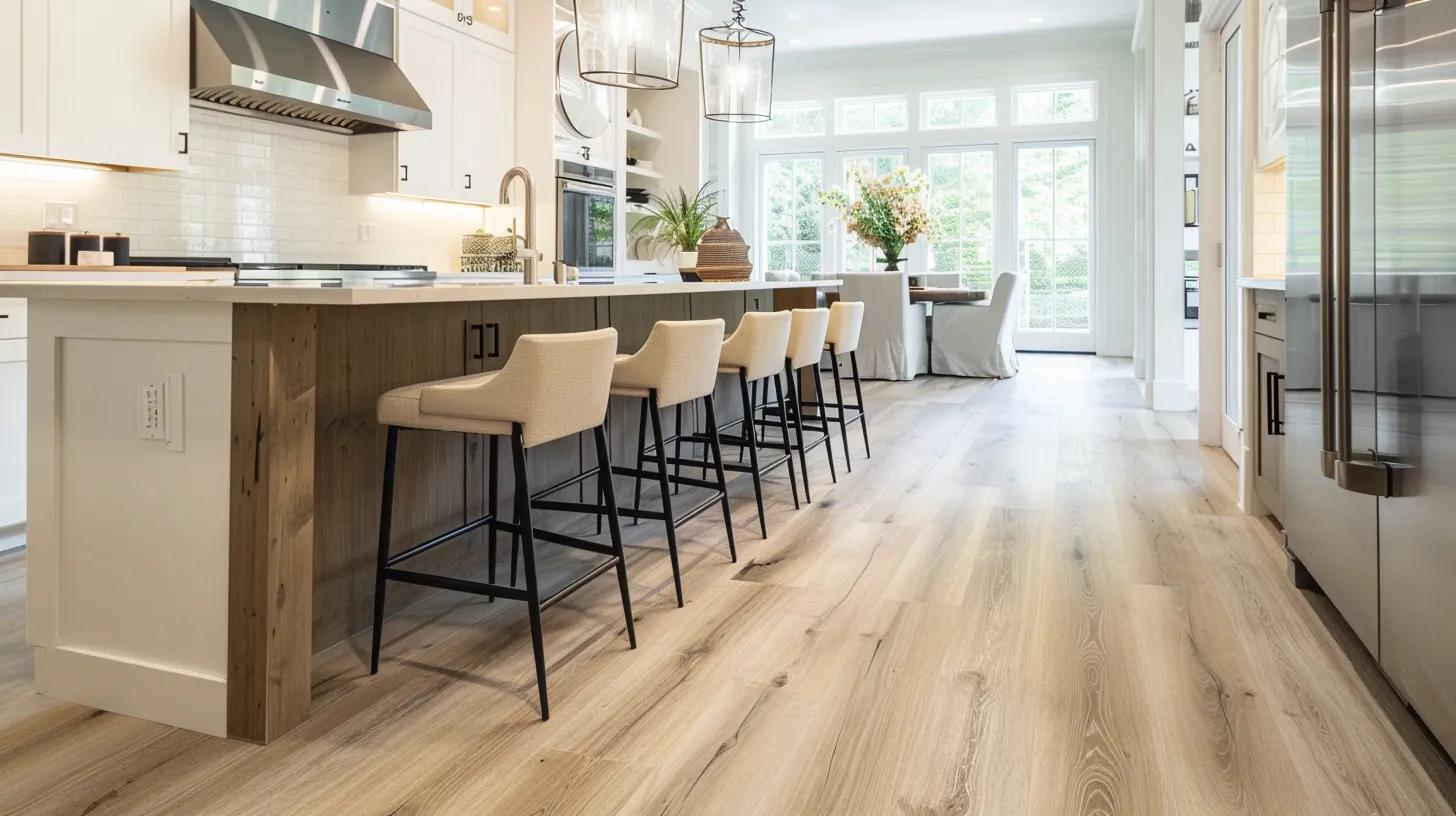
Luxury Vinyl Plank (LVP) flooring has gained popularity in Chamblee homes because it offers durability, style, and value. It’s designed to hold up under heavy foot traffic, making it a smart solution for households with kids, pets, or busy routines. Unlike traditional hardwood, LVP is resistant to scratches and moisture, and it handles spills and daily wear without much effort. Many homeowners also appreciate that it mimics the look of wood or stone while being more budget-friendly.
Another benefit is the installation process. LVP often uses a floating floor method, meaning the planks click together without the need for glue or nails. This reduces both installation time and labor costs. Plus, because the surface is non-porous, it’s easier to clean and less likely to trap dust, allergens, or bacteria, which supports better indoor air quality.
What Are the Key Benefits of LVP Flooring in Chamblee Homes?
For families and homeowners in Chamblee, LVP offers a practical balance between appearance and performance. It holds up well against daily challenges like scuffs, spills, and pet claws. The waterproof nature of many LVP products makes them ideal for areas like kitchens, bathrooms, and entryways where moisture is more common. Compared to hardwood or tile, it’s typically more affordable, and the quick installation process adds to its cost-effectiveness.
LVP also tends to last for years with minimal upkeep. Since many styles come with built-in underlayment, it can also improve comfort and reduce sound, which is useful in multi-story homes or homes with children and pets.
How Much Does LVP Flooring Installation Cost in Chamblee?
Prices for LVP flooring installation in Chamblee typically range from $2.50 to $5.50 per square foot, depending on the brand, style, and whether any additional prep work is needed. Costs may go up if the subfloor requires leveling or if old flooring must be removed, but overall, LVP remains one of the more budget-conscious flooring options available.
How Should You Maintain and Clean LVP Flooring for Longevity?
LVP is easy to maintain with regular sweeping and occasional mopping using a mild cleaner. Avoid harsh chemicals, which can wear down the surface. Using floor protectors under furniture and keeping entry areas clean will also help extend its lifespan. With these simple steps, LVP flooring can hold up well for many years.
How Does Engineered Hardwood Flooring Perform in High-Traffic Chamblee Homes?
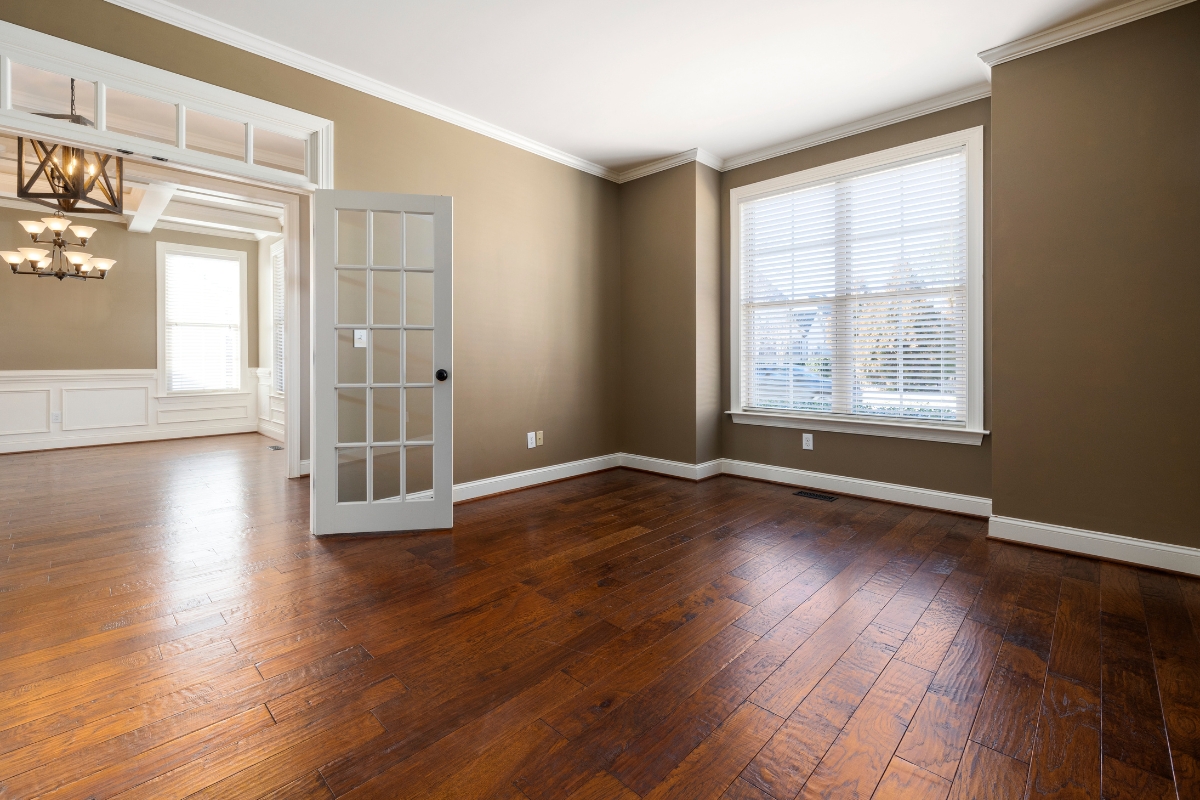
Engineered hardwood is a strong choice for homes in Chamblee that experience daily wear and tear. Its layered construction, typically made of a real wood veneer over a composite core, helps it stay stable under varying temperature and humidity conditions. This makes it especially useful in busy areas like hallways, dining rooms, and living spaces where consistent performance and appearance are essential.
The material offers the same visual appeal as solid hardwood, delivering a warm, natural look without being as vulnerable to moisture or warping. Engineered hardwood tends to be more forgiving in fluctuating climates and doesn’t require the same level of maintenance. This combination of style and function is why many homeowners choose it for areas that get a lot of foot traffic.
What Are the Advantages of Engineered Hardwood Over Solid Hardwood?
One of the key benefits of engineered hardwood is its resistance to expansion and contraction. While solid hardwood can react strongly to changes in moisture and temperature, the multi-layer design of engineered flooring gives it added strength. This makes it a more practical option in spaces where spills or humidity might be a concern.
It is also generally easier to install. Many types come with click-lock or tongue-and-groove systems that reduce labor time. Engineered hardwood often costs less than traditional solid wood while still offering a similar high-end look. These qualities make it a popular alternative for homeowners looking to balance appearance, cost, and durability.
What Is the Typical Cost and Installation Process for Engineered Hardwood in Chamblee?
In Chamblee, engineered hardwood installation typically ranges from $4 to $8 per square foot. This includes preparation steps such as allowing the material to acclimate, checking the condition of the subfloor, and planning the layout. The actual installation may use nail-down, glue-down, or floating methods depending on the specific product and site conditions.
Additional expenses may include removal of old flooring or adding trim and baseboards. While it is an upfront investment, the durability and low maintenance needs often offset the initial cost over time.
How Can Homeowners Maintain Engineered Hardwood Flooring?
To keep engineered hardwood looking good, it’s best to sweep or vacuum regularly with a soft attachment and clean up spills as they happen. Use products designed for hardwood to avoid damaging the finish. Protective pads under furniture and area rugs in high-use areas can prevent scratches. Over the years, light refinishing or sealing can help extend its lifespan.
What Are the Best Tile Flooring Options for High-Traffic Areas in Chamblee?
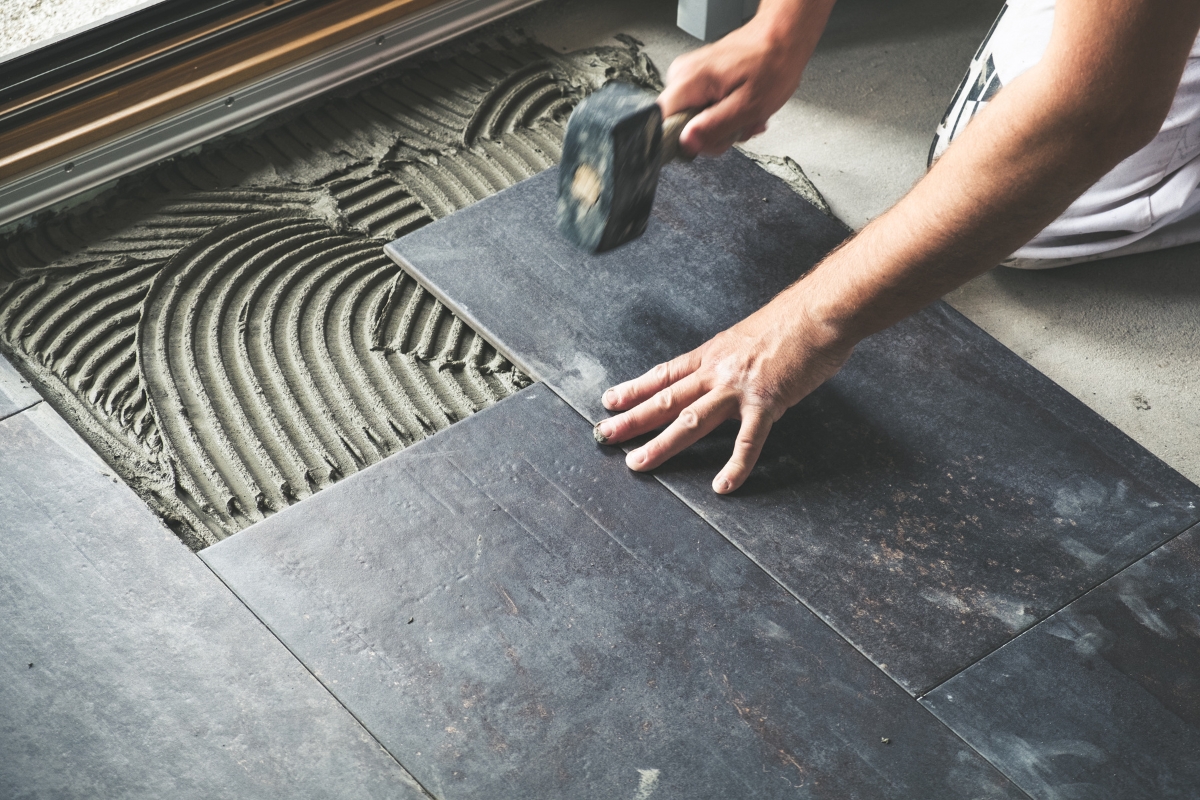
Tile flooring is a solid option for households in Chamblee that see a lot of daily activity. It’s known for holding up well under pressure, both from foot traffic and the occasional spill. Because it resists scratches, stains, and moisture, tile is commonly installed in areas like hallways, kitchens, mudrooms, and laundry rooms where durability is essential.
Beyond being tough, tile offers a clean and modern appearance that can easily be customized. Homeowners can choose from a wide range of colors, sizes, and patterns to suit their home’s style. Both porcelain and ceramic tiles are widely used in high-traffic settings. These materials not only offer a long lifespan but also help reduce allergens in the home, since dust and pet dander don’t cling to the surface like they might with carpet or textured flooring.
Which Tile Types Are Most Durable for Entryways and Kitchens?
In spaces like kitchens and entryways, where moisture and foot traffic are constant, porcelain tiles are a standout choice. They are fired at higher temperatures than ceramic tiles, making them denser and less porous. This extra durability means they can handle spills, dirt, and sudden temperature changes with minimal wear over time.
Ceramic tiles also perform well in busy areas. While slightly less dense than porcelain, they still offer good resistance to everyday damage and are easier to cut and shape during installation. Many ceramic options come in a wide variety of styles, from clean matte finishes to textured designs that mimic stone or wood. When slip resistance is a concern, especially in areas near water, choosing a tile with a textured or matte finish adds an extra layer of safety.
How Does Tile Installation Work and What Are the Costs in Chamblee?
Installing tile involves several steps, starting with a flat and stable subfloor. A bonding layer called thinset mortar is applied, followed by careful placement of each tile to ensure even spacing and alignment. Once set, grout is applied between the tiles and allowed to cure, after which the surface may be sealed depending on the tile and grout used.
In Chamblee, tile installation typically ranges from $5 to $12 per square foot. The final cost depends on the quality of the tile, the complexity of the pattern or layout, and whether additional preparation is needed, such as leveling an uneven subfloor or removing old flooring.
How Does Tile Compare to LVP for High-Traffic Durability and Style?
Tile and luxury vinyl plank (LVP) are both durable options, but each brings different strengths to the table. Tile is harder, more resistant to moisture, and typically lasts longer in wet or high-impact environments. It’s especially well-suited for entryways, bathrooms, and kitchens. LVP, on the other hand, is softer underfoot, easier to install, and often less expensive. It also performs well in high-traffic spaces and can mimic the look of hardwood or stone with fewer installation requirements.
How Can Waterproof Flooring Protect High-Traffic Areas in Chamblee Homes?
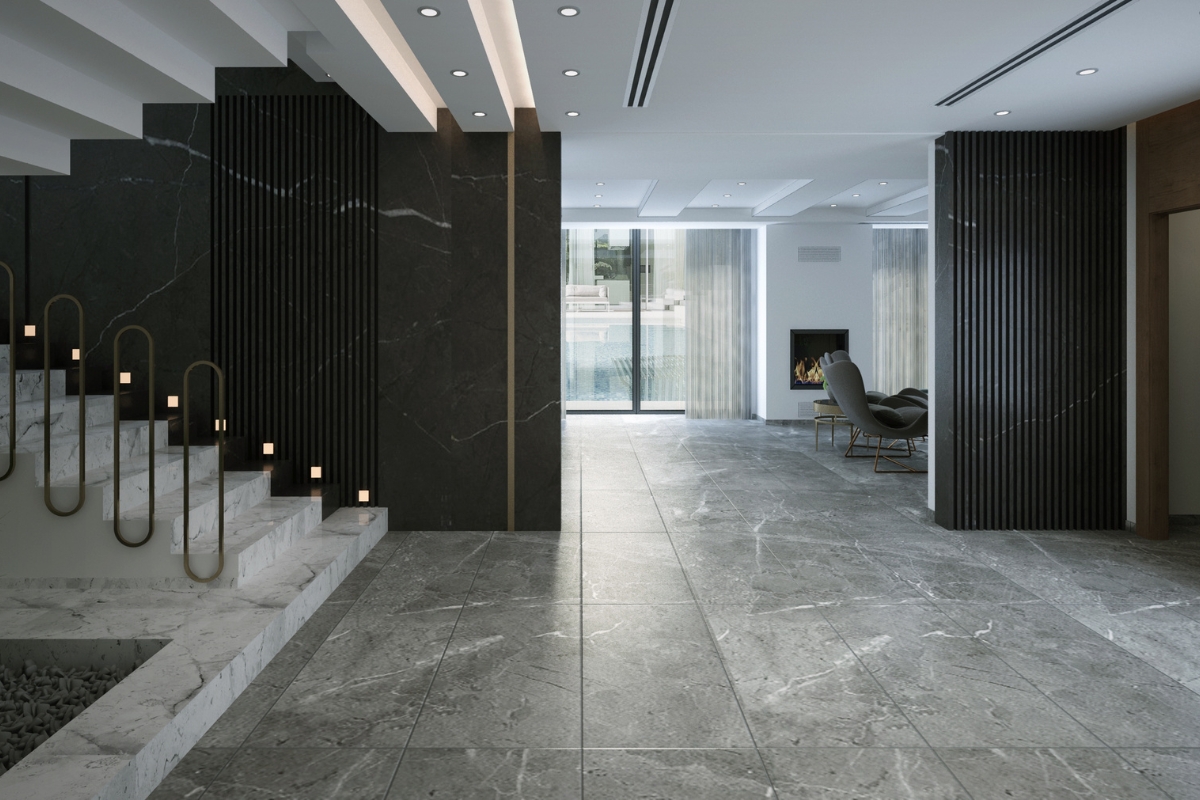
In homes where spills, humidity, and heavy foot traffic are part of daily life, waterproof flooring plays an important role. Areas like kitchens, bathrooms, mudrooms, and basements often face the highest exposure to moisture. Without proper protection, water can seep into subfloors and cause long-term problems such as warping, mold, and mildew. Waterproof flooring serves as a barrier that keeps moisture from penetrating the surface, helping maintain the structure and cleanliness of the home.
A major benefit of waterproof flooring is how easy it is to maintain. Its smooth surface doesn’t trap dirt or debris, and cleaning often requires little more than a quick mop or wipe-down. Unlike carpet or traditional wood flooring, waterproof options resist stains and don’t absorb odors, which helps create a more hygienic environment overall.
What Waterproof Flooring Materials Are Best for Basements and Kitchens?
For spaces that frequently get wet or damp, certain flooring materials are better suited than others. Luxury vinyl plank, or LVP, is a top choice thanks to its combination of durability, water resistance, and visual appeal. Many LVP options closely resemble hardwood, giving homeowners a high-end look without the upkeep or risk of water damage.
Sheet vinyl is another practical option, particularly for basements or utility rooms. Because it comes in large rolls, it can often be installed with minimal seams, which reduces the chance of moisture getting beneath the surface. It’s also relatively affordable and simple to maintain.
Porcelain tile is frequently used in kitchens and bathrooms. When properly sealed and grouted, it holds up well against moisture and is resistant to staining. While installation may be more labor-intensive, the result is a long-lasting surface that handles daily use and water exposure with ease.
What Should Homeowners Expect When Budgeting for Waterproof Flooring Installation?
Installation costs can vary depending on the material and the condition of the subfloor. For LVP or sheet vinyl, homeowners in Chamblee can generally expect to pay between $3 and $7 per square foot. Porcelain tile usually comes with a higher price tag, ranging from $7 to $15 per square foot. These estimates typically include labor but may increase if the installation involves removing old flooring, leveling the subfloor, or adding moisture barriers.
Other cost considerations include the layout of the space, any custom patterns or cuts required, and the type of underlayment needed. Investing in professional installation ensures a watertight fit that performs well over time.
What Should You Look for in a Waterproof Flooring Brand?
Reliable waterproof flooring comes from manufacturers with a strong reputation for quality and performance. Brands like Shaw, Mannington, Armstrong, and Mohawk have earned trust for their durable products and wide selection of styles. Many of their flooring lines feature realistic wood or stone finishes, allowing homeowners to achieve the look they want without sacrificing function.
These brands also offer warranties that cover wear, water resistance, and fading, giving buyers added peace of mind. Choosing a brand with a proven track record helps ensure that the flooring will hold up under daily stress and continue looking good for years to come.
Why Choose Professional Flooring Installation Services in Chamblee?
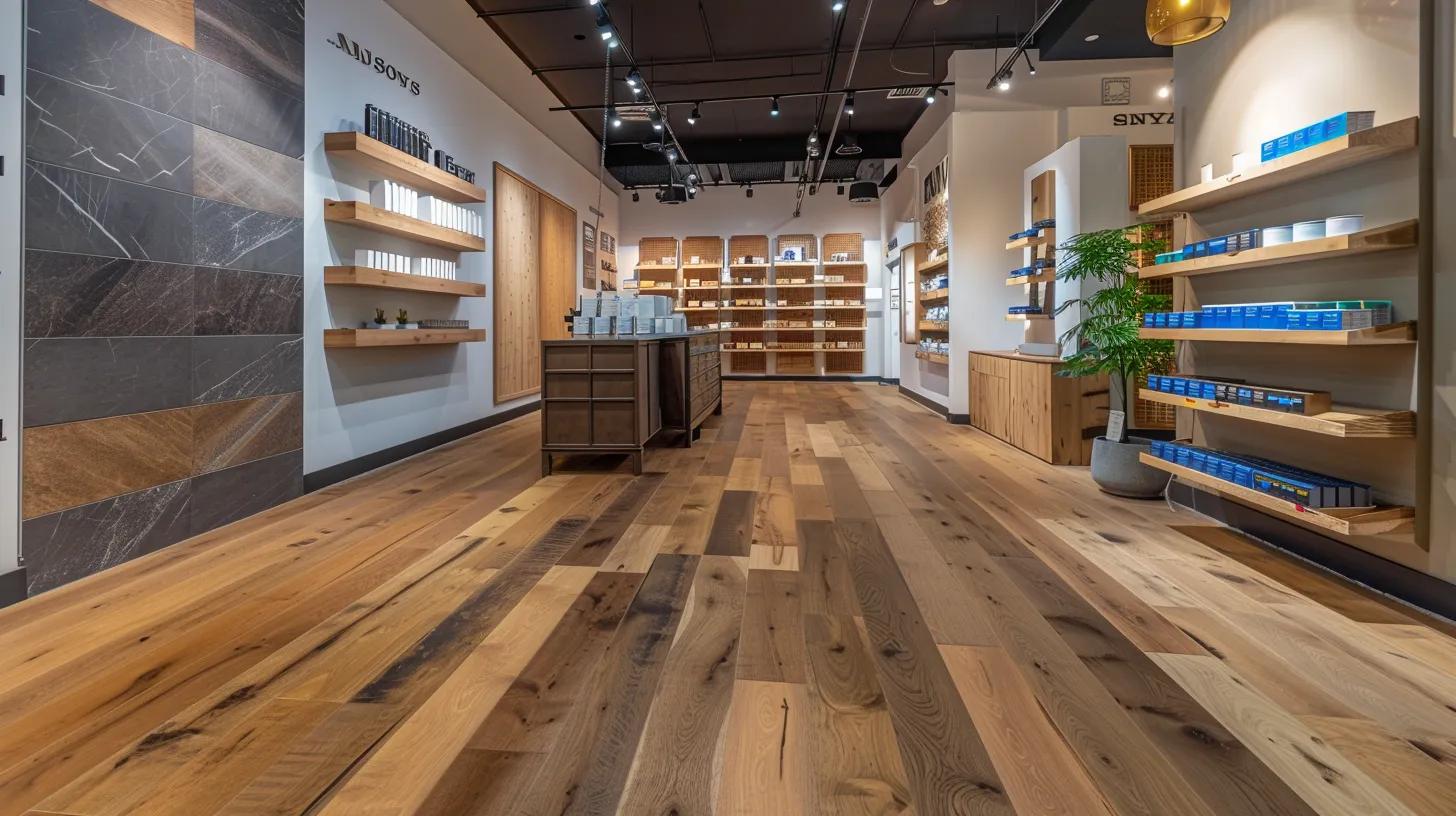
Having new flooring installed professionally is one of the best ways to ensure long-lasting results. While many flooring types may seem simple to install, there are several steps that need to be done correctly to avoid problems later. This includes preparing the subfloor, choosing the right installation method, and making sure the materials are laid out and sealed properly. These details may not seem important at first, but they directly affect how well the floor holds up in a busy home.
Professionals bring years of experience and an understanding of how to manage challenges that may not be obvious at first glance. Issues like uneven subfloors, hidden moisture, or complex room layouts can all impact the final result. A professional crew knows how to spot and handle these problems early, which can prevent costly repairs later.
What Are the Benefits of Hiring Local Flooring Installers in Chamblee?
Local installation teams offer more than just convenience. Because they work regularly in the area, they understand how the local climate can affect certain types of flooring over time. For instance, Chamblee’s humid summers and occasional cold spells can cause expansion and contraction in some materials. Local crews are more likely to know how to work with these conditions in mind, helping ensure the floor remains stable year-round.
Another benefit is accessibility. If something comes up after the job is done, a local installer is much easier to reach than an out-of-town contractor. That level of availability builds trust and provides peace of mind. In many cases, local installers are also more flexible with scheduling and can complete projects faster due to shorter travel times.
How Does the Installation Process Work in High-Traffic Areas?
The process usually starts with an evaluation of the space. Installers check for issues like moisture, uneven surfaces, or old adhesives that might interfere with the new floor. Any problems found at this stage are addressed before moving forward. This step is especially important for high-traffic areas, where floors are expected to withstand heavy daily use.
Once the surface is ready, the old flooring is removed if needed, and any protective barriers are added. The new flooring is then installed with careful attention to layout and measurement. This ensures a clean, consistent look across the space. Finishing touches like trim and transitions between rooms complete the job and improve the overall appearance.
What Does Professional Installation Typically Cost in Chamblee?
Installation costs vary depending on the flooring material and complexity of the job. Most projects in Chamblee fall within the range of $4 to $12 per square foot. Lower-cost options like luxury vinyl plank or sheet vinyl are usually on the lower end, while tile or hardwood may cost more due to additional labor and materials.
Other factors that affect the price include whether subfloor repair is needed, the layout of the space, and how much prep work is involved. While professional installation does add to the total project cost, it often results in fewer problems and longer-lasting results, making it a smart investment for many homeowners.
How Do You Choose the Best Flooring for Your High-Traffic Chamblee Home?
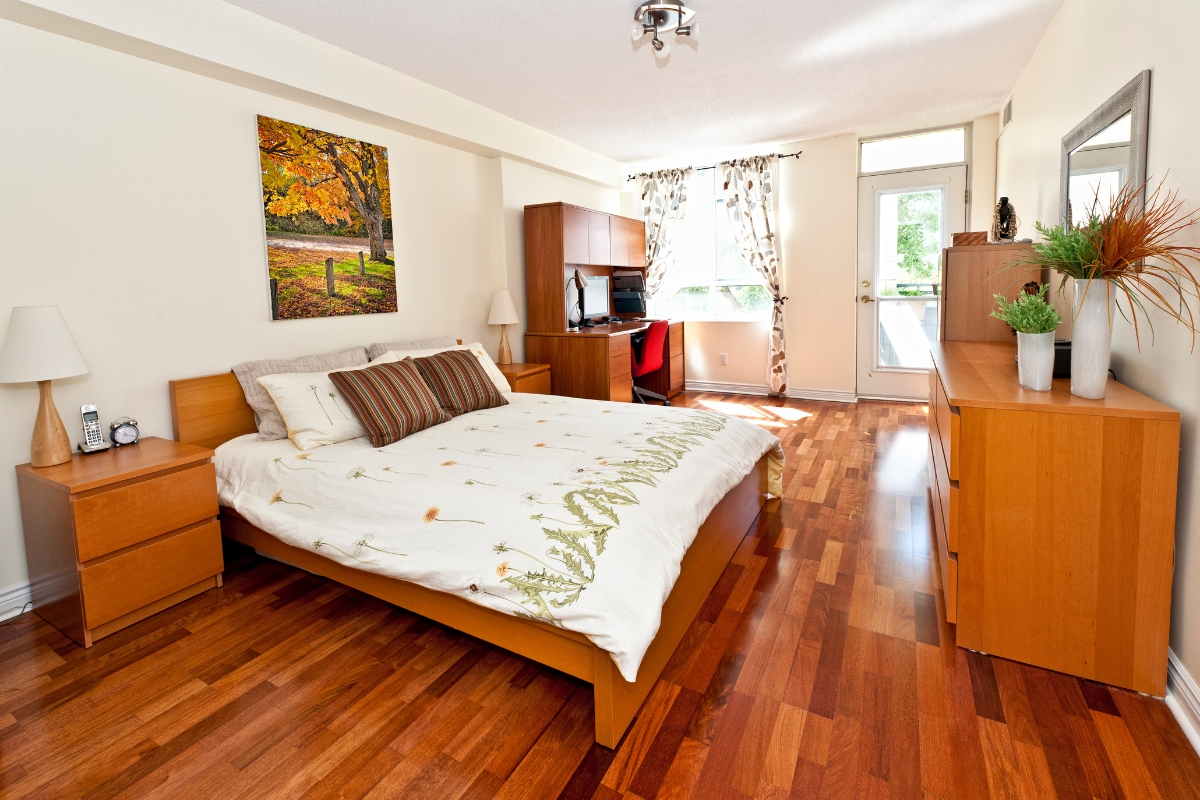
Finding the right flooring for a busy household in Chamblee means balancing practical needs with personal taste. Daily wear from kids, pets, and constant foot traffic takes a toll, so the material you choose needs to hold up over time. At the same time, the floor is a central part of your home’s appearance, so it should also match your style.
Durability is one of the top priorities for high-traffic areas. The best flooring will resist scratches, dents, and spills without constant maintenance. Moisture is also a factor, especially in a humid climate like Chamblee’s, where certain materials are more likely to warp or develop mold if they aren’t made to handle the conditions. Beyond performance, homeowners should also think about budget—not just the cost of buying and installing the floor, but the long-term care involved in keeping it in good shape.
What Factors Should You Consider: Durability, Style, Budget, and Maintenance?
When comparing flooring options, it helps to focus on how the material will perform in the long run. Durability means the floor can take a beating from everyday use without looking worn out too quickly. Whether it’s muddy shoes, pet claws, or spilled drinks, the surface should stay intact with minimal effort.
Style also matters. While function comes first, you don’t want to overlook the visual impact flooring has on a room. A well-chosen material can tie the space together and even increase your home’s value. Flooring trends come and go, so it’s worth picking something that feels timeless or flexible enough to work with different décor.
On the financial side, don’t just look at the price per square foot. Some flooring types may cost more up front but save money over time by needing fewer repairs or less frequent replacement. Finally, think about how easy the floor will be to clean and maintain. Households that stay busy will benefit from materials that don’t require much upkeep.
How Do Local Climate and Home Styles in Chamblee Affect Flooring Choices?
Chamblee’s climate adds another layer to consider. The area tends to have warm summers and steady humidity, so floors that trap moisture or respond poorly to changes in temperature are less practical. Homeowners in the region often gravitate toward materials that can stand up to these conditions without expanding, warping, or growing mold.
The architecture in Chamblee often blends classic Southern design with updated, modern interiors. That mix means versatile flooring options work best. A material that looks just as good in a farmhouse-style kitchen as it does in a more contemporary living room offers the kind of flexibility local homeowners need.
What Flooring Trends Are Popular Among Chamblee Homeowners?
Chamblee residents are drawn to materials that offer both function and aesthetic appeal. Luxury vinyl plank continues to grow in popularity thanks to its water resistance, realistic appearance, and low maintenance. Engineered hardwood is another favorite, offering the look of traditional wood with better durability in humid conditions.
Eco-friendly flooring like bamboo and low-VOC options appeal to homeowners looking for sustainable choices. Porcelain tile also remains a solid pick for high-traffic areas, especially in spaces like kitchens or entryways, where durability is key.
In short, the best flooring choice comes down to finding the right balance between appearance, durability, ease of care, and how well it handles the local environment.
What Are Common Questions About Flooring for High-Traffic Areas in Chamblee?
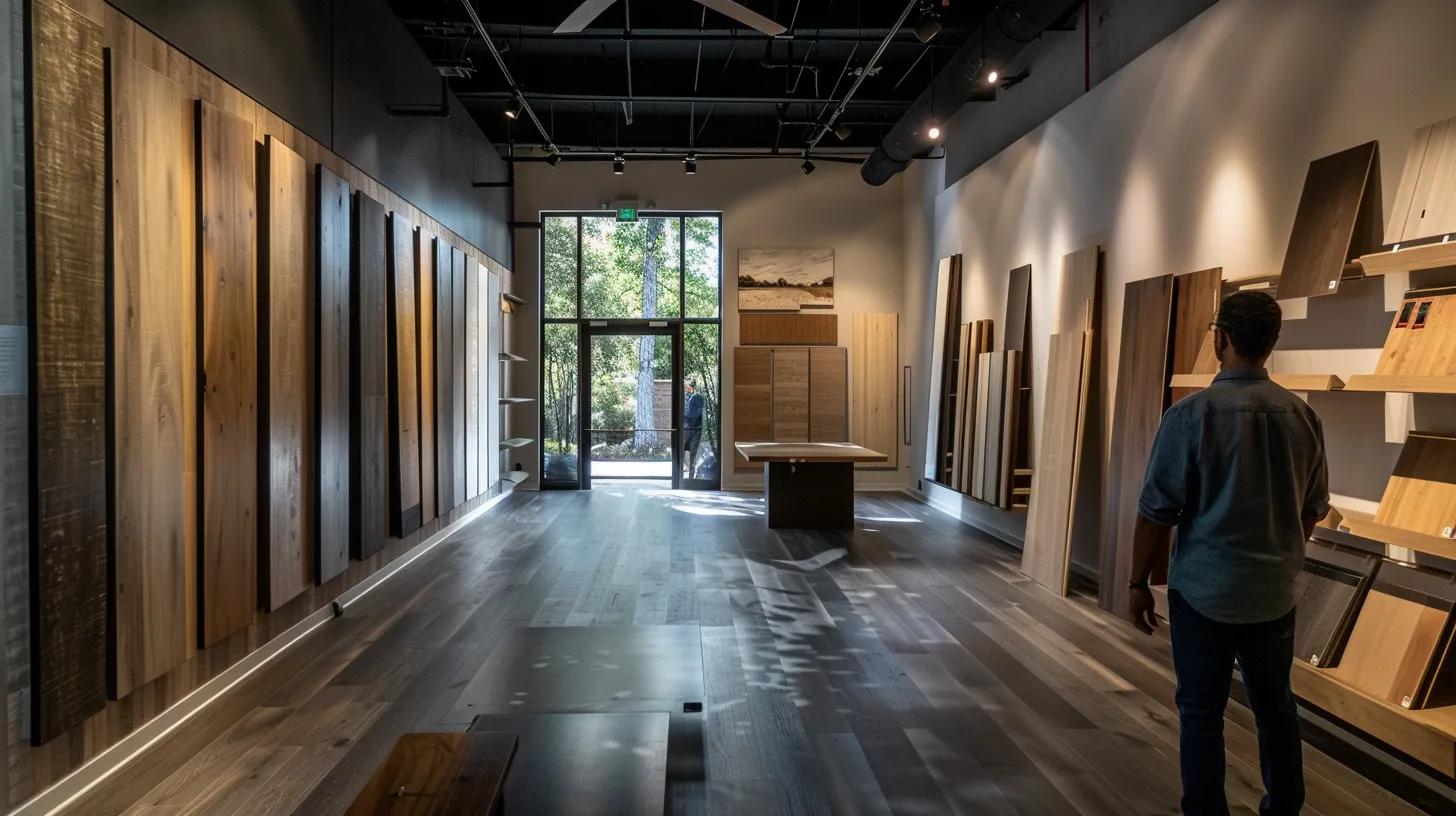
Choosing the right flooring for a busy home often raises several practical questions. Homeowners in Chamblee want to know which materials last the longest, how much upkeep is required, and whether installing the floor themselves is a good idea. Since high-traffic areas are more prone to wear and tear, the goal is to find flooring that holds up well without becoming a maintenance burden. Understanding the differences between options can help prevent unnecessary repairs and avoid replacing floors sooner than expected.
What Is the Most Durable Flooring for Homes With Pets and Kids?
Durability is a top concern for families with pets and children. Floors in these households deal with heavy use, spills, scratches, and lots of movement. Luxury vinyl plank (LVP) is often chosen because it’s water-resistant, scratch-resistant, and easy to clean. It also has a softer feel underfoot, which can be more comfortable in homes where kids play on the floor.
Porcelain tile is another strong option. It resists moisture, doesn’t scratch easily, and works well in areas like kitchens or mudrooms where messes are common. Engineered hardwood can also be a good fit when treated with a durable finish. It offers a warm, natural look but holds up better against changes in humidity than solid wood. All three of these options combine performance with appearance, making them reliable choices in busy homes.
How Long Does Flooring Last in High-Traffic Areas?
The life span of a floor depends on both the material and how well it’s maintained. With regular care, LVP can last 15 to 20 years. Porcelain tile often lasts more than 25 years and sometimes even longer if it’s properly installed and the grout is maintained. Engineered hardwood typically lasts 20 to 30 years. Some styles can be refinished once or twice during their life span, which can help extend their usability.
Daily habits also make a difference. Promptly wiping up spills, using mats at entryways, and avoiding harsh cleaning agents will all help preserve the surface and keep floors looking good for longer.
Can I Install Flooring Myself or Should I Hire a Professional?
Installing flooring yourself might save money upfront, but it often comes with trade-offs, especially in high-traffic areas. Mistakes like uneven seams, poor moisture protection, or improper subfloor preparation can lead to problems down the road. Professional installers have the experience and tools to ensure the floor is laid correctly and built to last. For materials like tile or engineered hardwood, professional installation is usually the safer choice if durability is a priority.
How Do I Maintain Different Flooring Types to Extend Their Life?
Each flooring type has different maintenance needs. LVP should be swept or vacuumed regularly and mopped with a mild cleaner. Avoid using abrasive products that can damage the surface. Engineered hardwood benefits from gentle cleaning solutions designed specifically for wood floors, and spills should be cleaned up quickly to avoid staining or warping. Tile floors should be cleaned with non-acidic cleaners, and the grout should be monitored for cracks or discoloration. Resealing grout lines every few years can also help prevent water damage.
Preventive steps like using felt pads under furniture and keeping high-traffic areas clear of dirt and grit go a long way toward preserving any flooring material. With the right care, your floors can stay attractive and durable for years.
Frequently Asked Questions
Q: What is the best flooring option for areas with heavy moisture exposure? A: Waterproof flooring—such as LVP, sheet vinyl, or porcelain tile—is ideal for basements and kitchens due to its robust resistance to water damage and ease of maintenance.
Q: How can I reduce wear and tear on my flooring in high-traffic areas? A: Choose durable materials like LVP, engineered hardwood, or tile, and use rugs, furniture pads, and regular maintenance routines to minimize damage.
Q: Are there eco-friendly flooring options suitable for high-traffic areas? A: Yes, sustainable options like bamboo and certain low-VOC engineered hardwood floors offer durability and style while improving indoor air quality.
Q: What factors should be considered when choosing flooring for high-traffic homes? A: Consider durability, water resistance, ease of maintenance, overall cost, and how well the flooring style matches your interior design.
Q: How often should high-traffic floors be professionally maintained? A: Professional maintenance every 1 to 2 years, along with routine cleaning, helps extend the life of your flooring.
Q: Can high-traffic flooring impact indoor air quality? A: Yes, non-porous and low-VOC flooring such as LVP and porcelain tile can reduce dust and allergens, thereby benefiting indoor air quality.
Q: What is the most cost-effective flooring option for busy homes in Chamblee? A: LVP is often the best choice due to its balance of durability, low installation cost, and attractive finish that mimics pricier materials.
Final Thoughts
When it comes to high-traffic areas in Chamblee homes, choosing the right flooring can make all the difference between constant upkeep and lasting beauty. At Diaz Hardwood Floors, we specialize in durable, stylish flooring options—like engineered hardwood, luxury vinyl plank, and porcelain tile—that stand up to daily wear without sacrificing charm. Ready to transform your busiest rooms into showcases of resilience and style? Give Diaz Hardwood Floors a call at 404-791-0444 today or get a free quote through our site form, and let our experts help you select the perfect flooring solution for your home.

